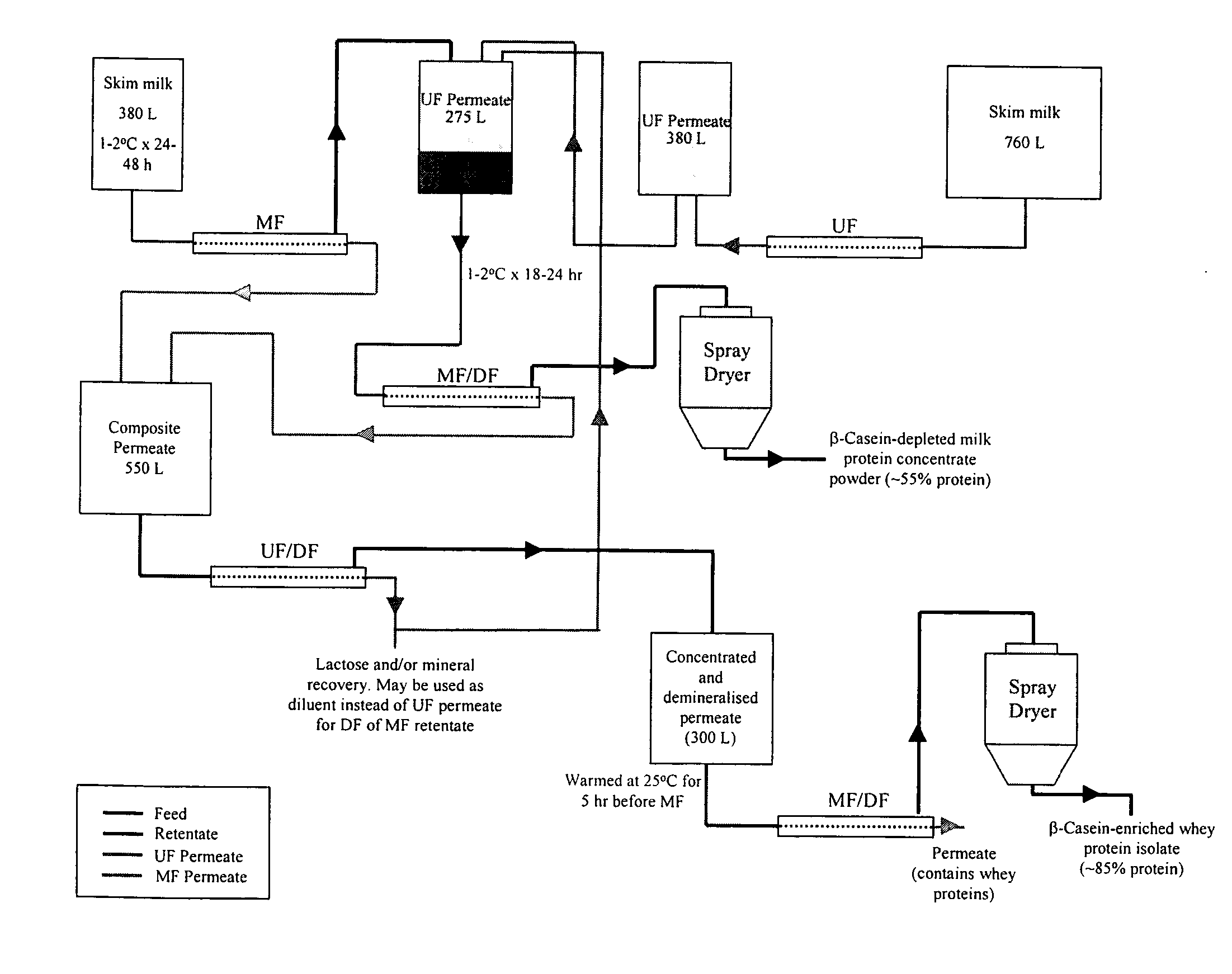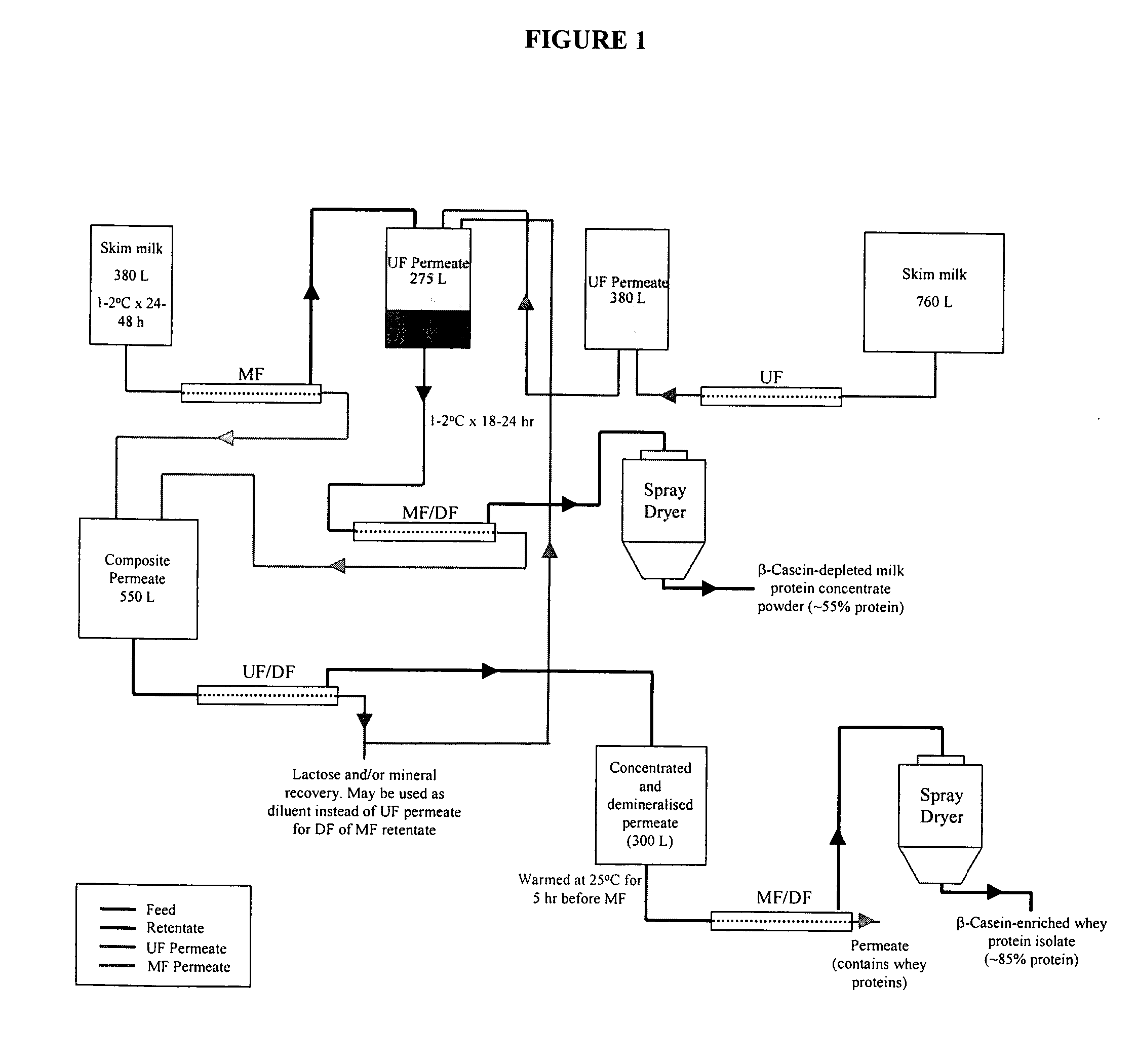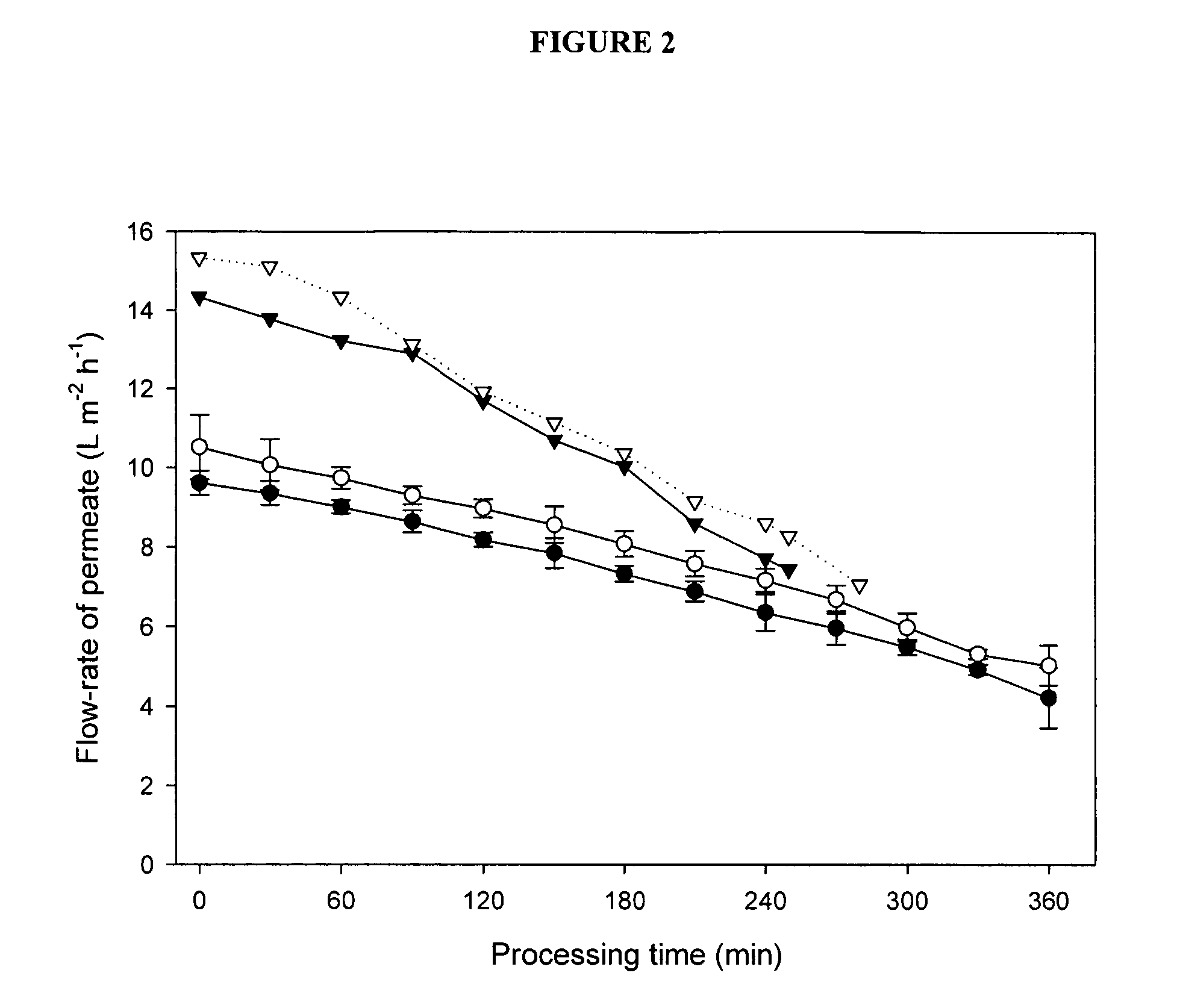Purification of beta casein from milk
a technology of beta casein and milk, applied in the field of protein fractionation and protein purification, can solve the problems of reducing the level of intact casein and/or whey protein, affecting and the majority of methods are not practicable for commercial use, so as to achieve high functionality and influence the rheological and functional properties of cheese. , the effect of not negatively affecting the cheese making properties of the milk
- Summary
- Abstract
- Description
- Claims
- Application Information
AI Technical Summary
Benefits of technology
Problems solved by technology
Method used
Image
Examples
examples
Integrated Filtration Process
[0071] As shown in FIG. 1, skim milk (380 L) was processed to a volume concentration factor (VCF) of 3.6 by MF, diluted to 380 L with permeate from ultrafiltration (UF) of skim milk and diafiltered (DF) to a VCF of 3.6. The filtration was performed at 2-5° C. (cold process) in three replica experiments. As a control used for comparison, in a separate experiment filtration was performed at 21-24° C. (warm process).
[0072] In addition to whey protein, permeate from the cold process contained casein (0.06 g / 100 g), the majority (>93%) of which was β-casein; 9.41% of the total β-casein content of the original skim milk was removed in the composite (combined MF and DF) permeate by the cold process.
[0073] Diafiltered retentates were spray-dried to produce MPC powders with ratios of αs1-:β-casein of 1.00:1.08 and 1.00:1.00 for the warm and cold processes, respectively. MPC powders produced by both the warm and cold processes had a protein content of about 54...
PUM
 Login to View More
Login to View More Abstract
Description
Claims
Application Information
 Login to View More
Login to View More - R&D
- Intellectual Property
- Life Sciences
- Materials
- Tech Scout
- Unparalleled Data Quality
- Higher Quality Content
- 60% Fewer Hallucinations
Browse by: Latest US Patents, China's latest patents, Technical Efficacy Thesaurus, Application Domain, Technology Topic, Popular Technical Reports.
© 2025 PatSnap. All rights reserved.Legal|Privacy policy|Modern Slavery Act Transparency Statement|Sitemap|About US| Contact US: help@patsnap.com



